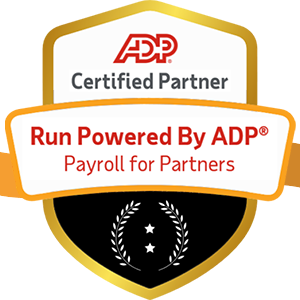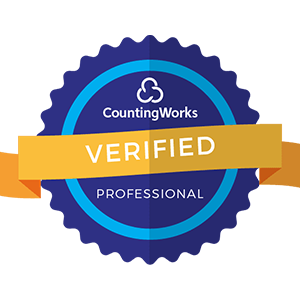
The Integration Imperative: Organizations with integrated HR systems report 73% faster time-to-hire, 42% reduction in administrative costs, and 38% higher employee satisfaction scores. Yet 68% of companies still operate disconnected HR systems that create inefficiencies, frustrate employees, and limit strategic decision-making capabilities.
Modern HR departments operate in an increasingly complex environment where talent acquisition teams use one platform, employee records live in another system, and payroll runs on a third application. This fragmentation creates a cascade of problems that extend far beyond simple inconvenience.
Consider the typical new hire experience in a siloed environment: Recruiters enter candidate information into their applicant tracking system, HR manually transfers data to the HRIS for employee setup, and payroll requires yet another data entry session to establish compensation records. Each handoff introduces error risks while creating delays that frustrate both employees and administrators.
The hidden costs of this disconnection compound over time. Deloitte research indicates that organizations with fragmented HR systems spend 23% more time on administrative tasks and experience 31% higher error rates in employee data management. These inefficiencies drain resources that could otherwise support strategic initiatives like talent development or workforce analytics.
Beyond operational costs, disconnected systems create strategic blindness. When talent data, employee information, and compensation details exist in separate silos, HR leaders lack the comprehensive insights needed for effective workforce planning and decision-making.

Integrated HR systems create seamless data flows that transform both employee experiences and operational efficiency. When talent management, HRIS, and payroll platforms communicate effectively, organizations unlock capabilities that siloed systems simply cannot deliver.
Integration eliminates the frustrating fragmentation that employees face when trying to access their information. Instead of navigating multiple portals with different login credentials and interfaces, workers can access everything from pay stubs to performance reviews through a single, coherent platform.
This unified experience extends beyond convenience to build employee engagement. When systems work together seamlessly, employees spend less time wrestling with administrative tasks and more time focused on productive work. The result is measurably higher satisfaction and engagement scores.
Self-service capabilities become truly powerful when backed by integrated data. Employees can update personal information once and see those changes reflected immediately across all relevant systems, from benefits administration to emergency contact records.
Integration enables sophisticated automation that eliminates repetitive manual tasks while reducing error rates. When a new hire accepts an offer in the talent management system, integrated platforms can automatically create HRIS records, establish payroll accounts, trigger background checks, and initiate equipment orders—all without human intervention.
These automated workflows ensure consistency while freeing HR teams to focus on higher-value activities. Instead of spending hours on data entry and reconciliation, professionals can concentrate on employee development, strategic planning, and relationship building.
Error reduction represents another significant advantage. Manual data transfer between systems introduces mistakes that can affect employee pay, benefits eligibility, and compliance reporting. Automated integration eliminates these transcription errors while maintaining audit trails that support compliance requirements.
Perhaps the most transformative benefit of HR system integration lies in its ability to provide comprehensive workforce insights. When talent, employee, and compensation data combine in unified analytics platforms, organizations gain unprecedented visibility into their human capital dynamics.
Integrated systems enable sophisticated analysis that isolated platforms cannot support. HR leaders can examine relationships between recruitment sources and long-term performance, analyze compensation equity across demographic groups, or identify skill gaps that affect organizational capabilities.
Predictive analytics become possible when historical data from multiple systems feeds machine learning algorithms. Organizations can forecast turnover risks, identify high-potential employees, and model the impact of various workforce scenarios on business outcomes.
Real-time reporting capabilities ensure that decision-makers have access to current information rather than outdated snapshots. This immediacy proves crucial in dynamic business environments where rapid workforce adjustments may be necessary.
While the benefits of HR system integration are compelling, the implementation process presents several challenges that organizations must navigate carefully.
Many organizations operate HR systems that were implemented years or even decades ago, before integration capabilities became standard features. These legacy platforms often lack modern APIs or use proprietary data formats that complicate connection with newer systems.
The solution approach depends on the specific legacy constraints and organizational priorities. Some companies choose phased replacement strategies that gradually migrate from legacy systems to modern, integration-friendly platforms. Others implement middleware solutions that translate between old and new system languages.
Cloud-based integration platforms have simplified many legacy challenges by providing pre-built connectors for common HR systems. These platforms can often bridge gaps between incompatible systems without requiring major infrastructure changes.
Successful integration depends on clean, consistent data across all connected systems. Unfortunately, years of siloed operation often result in duplicate records, inconsistent formatting, and incomplete information that complicates integration efforts.
Data cleansing initiatives must precede integration projects to ensure successful outcomes. This involves identifying and merging duplicate employee records, standardizing data formats across systems, and filling gaps in critical information fields.
Ongoing data governance becomes essential once integration is established. Clear policies about data entry, maintenance, and quality control help prevent the degradation that can undermine integration benefits over time.
HR systems contain some of the most sensitive information in any organization, including personal identification data, compensation details, and performance evaluations. Integration projects must maintain or enhance security protections while enabling data sharing between systems.
Modern integration platforms provide robust security features including encryption, access controls, and audit logging that often exceed the capabilities of standalone systems. However, organizations must carefully evaluate security architectures and ensure compliance with applicable regulations.
Privacy regulations like GDPR and CCPA add complexity to integration projects by requiring specific consent and data handling procedures. Integration designs must accommodate these requirements while maintaining operational efficiency.
Technical integration represents only half the challenge—organizations must also manage the human side of system consolidation. Employees accustomed to familiar interfaces and workflows may resist changes, even when new systems offer superior capabilities.
Comprehensive change management strategies address both rational and emotional aspects of system transitions. Clear communication about integration benefits, extensive training programs, and ongoing support help ensure successful user adoption.
Pilot programs allow organizations to test integration approaches with limited user groups before company-wide rollouts. These pilots provide opportunities to identify and resolve issues while building internal advocates for the new integrated systems.

Successful HR system integration requires careful consideration of technical architecture options and technology platforms that will support both current needs and future growth.
Organizations can choose from several integration approaches, each with distinct advantages and limitations. Point-to-point integrations directly connect individual systems but can become complex as the number of connections grows. Hub-and-spoke architectures use central integration platforms that coordinate data flows between multiple systems.
Cloud-based integration platforms offer significant advantages for most organizations, including pre-built connectors for popular HR systems, scalable processing capabilities, and managed infrastructure that reduces internal IT burden.
Enterprise service bus (ESB) architectures provide robust integration capabilities for complex organizations with multiple systems and sophisticated data flow requirements. While more complex to implement, ESBs offer flexibility and scalability for large-scale integration projects.
Modern HR systems increasingly offer application programming interfaces (APIs) that enable real-time data sharing and system coordination. Organizations should prioritize systems with robust, well-documented APIs when making technology decisions.
RESTful APIs have become the standard for most HR system integrations due to their simplicity and reliability. These interfaces enable real-time data synchronization and support the responsive user experiences that employees expect.
Webhook capabilities allow systems to notify each other immediately when important events occur, enabling automated workflows that respond instantly to changes. For example, when an employee updates their address in the HRIS, webhooks can trigger immediate updates to payroll and benefits systems.
Integrated HR systems require clear data governance policies that define authoritative sources for different types of information. Master data management (MDM) approaches ensure that critical employee data maintains consistency across all connected systems.
Single source of truth principles help prevent conflicts when multiple systems could potentially update the same information. Clear rules about which system controls specific data elements eliminate confusion and ensure data integrity.
Data lineage tracking becomes important in integrated environments to understand how information flows between systems and identify potential impact when changes are made to upstream sources.
Successful HR system integration projects follow structured approaches that minimize risk while maximizing benefits. A phased implementation strategy allows organizations to build capability gradually while learning from early experiences.
Begin with comprehensive assessment of current systems, data quality, and integration requirements. This discovery phase should examine technical capabilities, business processes, and user needs to establish clear integration objectives.
Stakeholder mapping identifies all parties affected by integration projects, from end users to IT administrators to external vendors. Early engagement with these stakeholders helps ensure that integration designs meet actual needs rather than assumed requirements.
Business case development quantifies expected benefits and costs to secure organizational support for integration initiatives. Clear metrics and success criteria provide accountability and help maintain momentum throughout implementation.
Data cleansing and standardization efforts create the foundation for successful integration. This preparatory work often takes longer than expected but proves essential for long-term success.
Infrastructure preparation may involve upgrading network capabilities, implementing security controls, or establishing development environments for testing integration workflows.
Vendor selection and contract negotiation should consider not only initial integration costs but also ongoing maintenance, support, and expansion capabilities. Integration platforms that offer extensive pre-built connectors can significantly reduce implementation time and costs.
Start with limited-scope pilots that prove integration concepts while building internal expertise. Common pilot approaches include integrating talent acquisition with HRIS for new hires or connecting payroll with time tracking systems.
User feedback collection during pilot phases provides insights for refining integration approaches before broader deployment. This feedback often reveals usability issues or workflow gaps that weren't apparent during planning phases.
Performance monitoring ensures that integrated systems meet expectations for speed, reliability, and accuracy. Baseline measurements help identify areas needing optimization before full-scale rollout.
Gradual rollout strategies minimize risk while allowing support teams to manage change effectively. Rolling out by department, location, or user group provides opportunities to address issues before they affect the entire organization.
Training programs should accommodate different learning styles and technical skill levels. Comprehensive documentation, video tutorials, and hands-on practice sessions help ensure successful user adoption.
Continuous monitoring and optimization ensure that integrated systems continue meeting organizational needs as requirements evolve. Regular performance reviews and user feedback sessions identify opportunities for enhancement.
Effective measurement strategies track both quantitative metrics and qualitative indicators that demonstrate integration value to stakeholders throughout the organization.
Time savings represent one of the most tangible benefits of HR system integration. Track metrics like time-to-hire, payroll processing duration, and administrative task completion times to quantify efficiency improvements.
Error reduction measurements compare data accuracy before and after integration implementation. Focus on metrics like duplicate employee records, payroll corrections, and compliance reporting errors that directly impact operations.
Cost analysis should include both direct savings from reduced administrative work and indirect benefits like improved employee satisfaction and retention.
User satisfaction surveys provide insights into how integration affects daily work experiences. Track metrics like system usability ratings, self-service adoption rates, and overall HR service satisfaction.
Help desk ticket volume often decreases after successful integration as employees encounter fewer system issues and can resolve more questions through self-service capabilities.
Employee Net Promoter Scores can reveal whether integrated HR systems contribute to overall employer brand strength and employee advocacy.
Data quality improvements enable better decision-making throughout the organization. Track metrics like report accuracy, data completeness, and decision-making cycle times that reflect enhanced analytical capabilities.
Workforce analytics adoption often increases after integration as clean, comprehensive data becomes available for strategic analysis. Monitor usage of advanced analytics capabilities and their impact on HR strategy development.
Business partnership effectiveness may improve as HR teams spend more time on strategic initiatives rather than administrative tasks. Track metrics like HR business partner engagement and strategic project completion rates.

The HR integration landscape continues evolving rapidly, with new technologies and approaches offering enhanced capabilities for organizations ready to embrace innovation.
AI-powered integration platforms can automatically map data fields between systems, reducing the manual configuration required for complex integrations. Machine learning algorithms continuously optimize data flows and identify potential issues before they affect operations.
Intelligent automation goes beyond simple workflow triggers to make contextual decisions about data routing, exception handling, and user notifications. These capabilities reduce the maintenance burden while improving integration reliability.
Predictive analytics applications become more sophisticated when fed by comprehensive integrated datasets. Organizations can forecast workforce trends, identify retention risks, and optimize talent strategies using AI-powered insights.
Low-code development environments enable HR professionals to create and modify integrations without extensive technical expertise. These platforms use visual design tools and pre-built components to simplify integration development and maintenance.
Citizen developer capabilities allow business users to extend and customize integrations as needs evolve, reducing dependence on IT resources for routine modifications.
Rapid prototyping becomes possible when integration platforms offer drag-and-drop interfaces and immediate testing capabilities. Organizations can experiment with new integration patterns quickly and cost-effectively.
Blockchain applications in HR integration focus primarily on identity verification and credential management. Distributed ledgers can provide tamper-proof records of employee qualifications, certifications, and employment history.
Smart contracts may eventually automate complex HR processes like benefit enrollment or performance-based compensation adjustments based on predefined criteria stored in blockchain systems.
Interoperability standards built on blockchain technologies could simplify integration between HR systems from different vendors by providing common protocols for data exchange and verification.
Successful HR system integration requires leadership vision that extends beyond technical implementation to encompass organizational transformation and competitive positioning.
ROI calculations should include both hard savings from operational efficiency and soft benefits like improved employee engagement and strategic decision-making capabilities. Conservative estimates help build credibility while aggressive projections may face skepticism.
Risk mitigation represents another important business case element. Integrated systems typically offer better security, compliance, and disaster recovery capabilities compared to fragmented architectures.
Competitive advantage arguments should emphasize how integration enables capabilities that differentiate the organization in talent markets and business performance.
Communication strategies must address concerns about job security, skill requirements, and daily work changes that integration projects often generate. Transparent, frequent communication builds trust and reduces resistance.
Training investments should extend beyond system operation to include new analytical capabilities and strategic thinking skills that integrated systems enable. This upskilling approach helps HR professionals embrace integration as career development rather than threat.
Success celebration and recognition help maintain momentum throughout lengthy integration projects while building organizational confidence in transformation initiatives.
Integration platforms should support anticipated organizational growth and evolution rather than just current requirements. Scalable architectures prevent the need for major system replacements as companies expand.
Vendor partnership strategies should consider long-term roadmaps and innovation capabilities rather than just current feature sets. Strong vendor relationships facilitate ongoing system evolution and enhancement.
Technology refresh planning helps ensure that integrated systems remain current and capable as business requirements and available technologies evolve.
HR system integration represents more than a technology project—it's a strategic transformation that can fundamentally improve how organizations manage their most valuable asset: their people. The benefits extend far beyond operational efficiency to encompass employee satisfaction, strategic decision-making, and competitive advantage.
While integration challenges are real and significant, the organizations that successfully navigate these obstacles gain substantial advantages over competitors operating with fragmented systems. The key lies in approaching integration as a comprehensive change initiative rather than a purely technical endeavor.
The most successful integration projects combine technical expertise with strong change management, clear business objectives with user-focused design, and ambitious vision with practical implementation approaches. Organizations that master this balance create HR capabilities that drive both employee satisfaction and business performance.
As the business environment becomes increasingly dynamic and competitive, the ability to make rapid, data-driven decisions about workforce strategy becomes crucial for organizational success. Integrated HR systems provide the foundation for this strategic agility while delivering immediate operational benefits.
The question for HR leaders isn't whether to integrate their systems, but how quickly and effectively they can make this transition. Organizations that delay integration risk falling behind competitors who leverage unified HR platforms to attract better talent, make smarter decisions, and operate more efficiently.
The future belongs to organizations that view their HR systems as integrated platforms for human capital optimization rather than separate tools for administrative tasks. By breaking down silos and creating seamless HR operations, forward-thinking companies position themselves for sustained success in an increasingly talent-driven economy.


